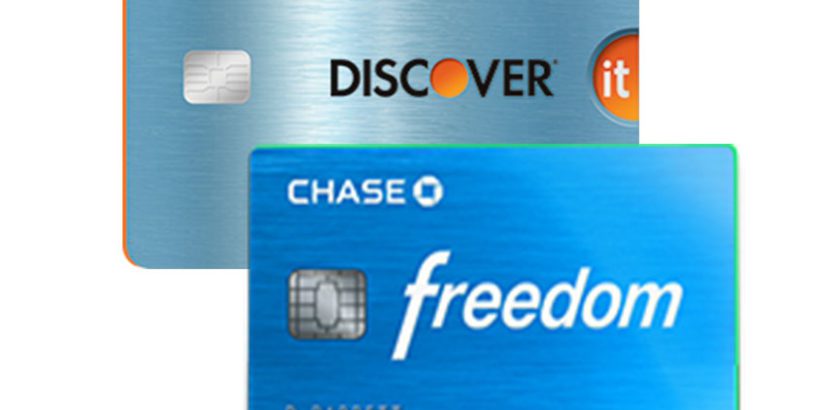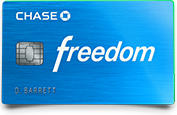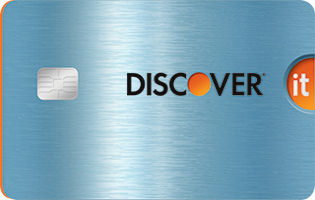[This article contains expired offers]
There are two Discover it® cards and two Chase Freedom cards available. For this comparison, I’m going to compare the Discover it® cash back card with the 5% rotating categories to the standard Chase Freedom card, also with 5% rotating categories. While these cards appear almost identical, there are certain features of each card that can make one much more valuable than the other depending on how the cardholder plans on redeeming their points.
Cash back vs potential miles
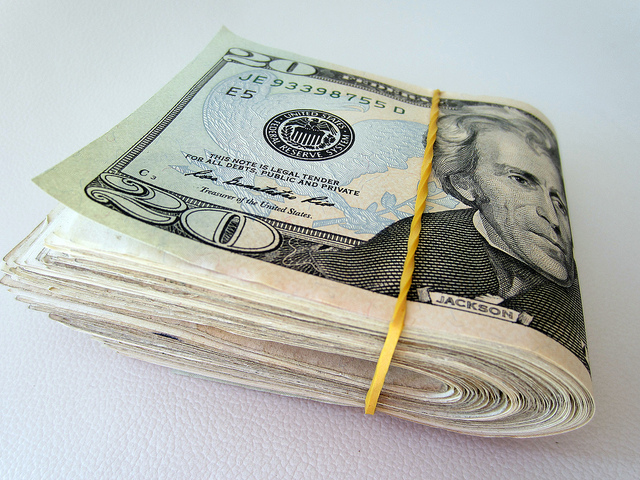
Photo by 401(K) 2012 via Flickr.
One of the biggest differences between these two cards is that the Chase Freedom card earns Ultimate Rewards. If you also have the Chase Sapphire Preferred® or the Chase Ink Plus®, you can transfer these Ultimate Rewards to a variety of airline and hotel partners. With the Discover it, you care limited to strictly redeeming for cash back and/or gift cards or online purchases.
This is a huge difference in terms of potential value because although Chase Ultimate Rewards can be redeemed for cash back at a rate of one cent per point, when they are utilized effeciently, they can be worth much more. For example, I recently wrote about redeeming about 60,000 Ultimate Rewards on Singapore Airlines at a redemption rate of 8.9 cents per point! (more on that below.)
Since the Discover it doesn’t earn any reward currency that can transfer to travel partners, you can’t ever multiply the value of your “cash back earned.” Thus, for the serious traveller who is keen on maximizing redemptions with airlines and hotels, the points earned from the Chase Freedom will often prove to be more valuable than the straight cash back redeemed from the Discover it.
Basic card features
Chase Freedom
- No Annual Fee
- 0% Intro APR for 15 months on purchases. After the intro period, a variable APR of 14.24%, 19.24%, or 23.24%.
- 0% Intro APR for 15 months on balance transfers. After the intro period, a variable APR of 14.24%, 19.24%, or 23.24%.
- Balance transfer fee is 5% of the amount transferred with a minimum of $5.
Discover it®
- No Annual Fee
- 0% Intro APR for 12 months on purchases. After the intro period, then 11.24% to 23.24% Standard Variable Purchase APR applies.
- 0% Intro APR for 12 months on balance transfers. After the intro period, then 11.24% to 23.24% Standard Variable Purchase APR applies.
- Balance transfer fee is 3% of the amount transferred.
The Discover it also has a few additional benefits that you won’t find with the Freedom, such as:
- Free FICO score
- No foreign transaction fees
- No late fee for 1st missed payment
- 100% U.S.-based customer service available day or night
These card features are roughly similar with the Freedom offering a longer interest free intro period of 15 months and the Discover it offering more benefits like no foreign transaction fees and free FICO scores.
The lower balance transfer fee of 3% for the Discover it is great, too, especially for those trying to pay off a large balance. It should be noted that the Discover it is generally easier to get approved for than the Chase Freedom, so if you’re trying to build up your credit you might want to consider your approval odds.
Redeeming cash back
Discover it®
You may redeem your Cashback Bonus for:
- Gift cards or instant eCertificates —starting at $20
- Charitable donation to select charities—starting at a penny
- Credit to your Account—starting at a penny
- Electronic deposit into any account you designate—starting at a penny
- Pay with Cashback Bonus at select online retailers—starting at a penny
Chase Freedom
- Gift cards or travel at 1 cent per point
- Cash back through an account statement credit or an electronic deposit into an eligible checking or savings account held by a financial institution located in the United States. — you need at least 2,000 points to use them for cash.
The Discover it allows for more flexible redemptions for cash back, as you can redeem starting at one cent for cash back, while the Freedom requires $20 increments for cash back. However, as already mentioned, the Chase Freedom can transfer out points to travel partners so long as you have one of the requisite premium Chase cards.
Therefore, if you know you just are interested in cash back rewards, the Discover it is more flexible but if you think you might be transferring points to travel partners, the redemptions for the Chase Freedom are going to be better.
Earning Potential
Chase Freedom
- Earns 5X on rotating bonus categories up to $1,500 per quarter.
- Earn a $150 bonus after you spend $500 on purchases in your first 3 months from account opening.
- Earn a $25 bonus when you add your first authorized user and make your first purchase within this same 3-month period.
Discover it®
- Earns 5X on rotating bonus categories up to $1,500 per quarter.
- Cashback MatchTM: After the first 12 consecutive billing periods that your new account is open, Discover will match all of the cash back rewards you’ve earned.
The sign-up bonus sets the Freedom apart from the Discover it but the doubling of all points earned in the first year is a tremendous perk and can more than make up for the lost earnings of the sign-up bonus as will be shown below.
Comparing the 5X categories
The quarterly categories for both cards are roughly the same. Although they change each year, you can expect to generally see the same major categories like Amazon.com, gas, restaurants, etc.
If I had to give an edge, I might give to the Discover it for having Amazon.com in two quarters and for allowing for a heck of a stacking deal the first where you can basically earn 20X on certain categories by utilizing Discover Deals (more on that below). Chase might be stepping up its game in this department, however, as they offered a bonus 10X on Amazon.com last year in 2015.
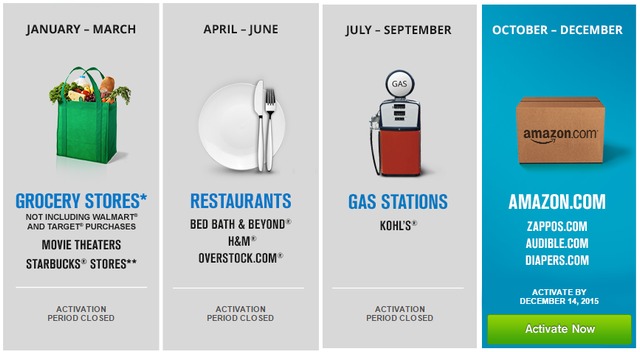
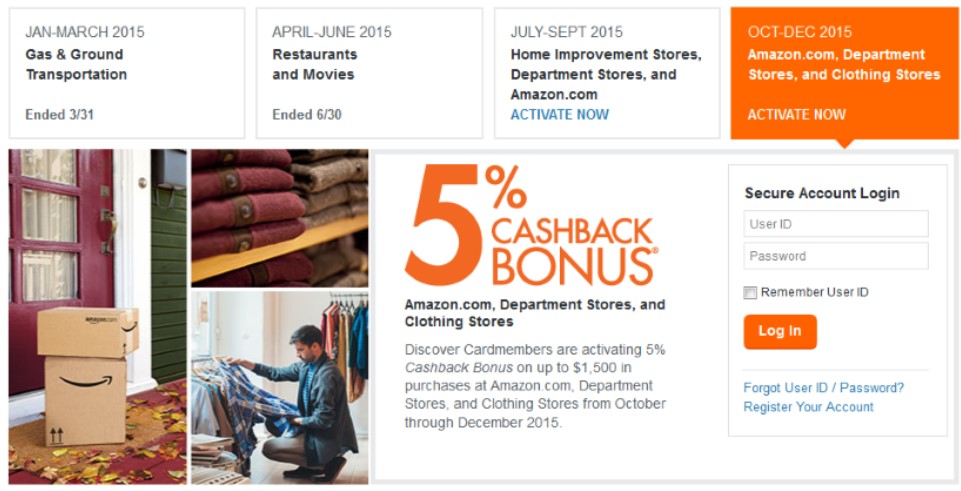
Comparing the earning potential
So let’s run some simple math to see what card nets the most amount of cash back when you factor in the Freedom’s sign-up bonus vs the Discover it’s “Cashback Match.”
Since both of these cards offer 5X on rotating categories up to $1,500 per quarter and then 1X on all other purchases, the base earning rate will be the same for these comparisons. The question will be whether or not the doubling of the cash back from the Discover it out-earns the $175 sign-up bonus offered by the Freedom.
(Obviously, as just shown, there are some differences in the 5X categories between these two cards but to make the calculations simple, I’m going to assume the same amount of spend for the different 5X categories.)
1. Maxing out 5X bonus categories
If you spend $10,000 perfectly maxing out rotating bonus categories.
- Discover it: $340 x 2 = $680 (6.8%)
- Chase Freedom: $340 + (SUB $175) = $515 (5.2%)
If you spend $25,000 perfectly maxing out rotating bonus categories.
- Discover it: $490 x 2 = $980 (3.9%)
- Chase Freedom: $490 + (SUB $175) = $665 (2.7%)
2. Halfway maxing out 5X bonus categories
If you spend $10,000 perfectly halfway maxing out rotating bonus categories.
- Discover it: $220 x 2 = $440 (4.4%)
- Chase Freedom: $220 + (SUB $175) = $395 (3.95%)
If you spend $25,000 perfectly halfway maxing out rotating bonus categories.
- Discover it: $370 x 2 = $740 (2.9%)
- Chase Freedom: $370+ (SUB $175) =$545 (2.2%)
As you can see, the Discover it earns significantly more cash back than the Chase Freedom does in the first year. The cash back rate even hits as high as 6.8% when you max out the bonus categories and spend $10,000.
But remember what I said about redeeming my 60,000 Ultimate Rewards for 8.9 cents per point on Singapore Airlines? If I were to factor in that value into these calculations, it comes out to far more than the Discover it.
Let’s use the las $25,000 spend as an example.
At 2.2%, the Freedom would earn me 54,500 Ultimate Rewards (or $545 cash back). However, if I were to redeem these awards at 8.9 cents per point, I’d come out with $4,850.50 worth of value. That amounts to a return of 19.4%, which is far higher than anything the Discover it could offer.
It’s true that Ultimate Reward redemptions won’t always be as sweet as that extreme example and there’s a difference between earning cash back that you can do whatever you want to do with versus earning points that are going towards pricey redemptions you wouldn’t otherwise book. However, it just goes to show that for a traveler, the value in travel currency can far outweigh the value of straight cash back from a card like the Discover it.
Also, don’t forget that the high cash back values for the Discover it will only last for 12 months. After that, you’ll be more limited compared to Ultimate Rewards, which will always have the potential to be redeemed at higher rates.
Additional earning potential
The Discover it also has access to Discover Deals, which is a shopping portal where you can earn even more cash back savings when purchasing items from online retailers. The beauty of getting the Discover it is that Discover will also double the cash back earned in the first year from the shopping portal! And those points are in addition to what you’ll earn on the card. So if you hit a 5X category and found a great deal on Discover Deals like 5X at a place like Home Depot, you could earn 20X on those purchases!
Chase has the Ultimate Rewards shopping portal but in order to get access to it you’ll have to have a premium card like the Sapphire Preferred® or the Ink Plus®. While the Ultimate Rewards shopping portal often has some of the best bonus rates, I don’t think it can compare with the potential first-year earnings of the Discover it with Discover Deals.
Final word
If you are just looking to earn cash back on a credit card, the Discover it will earn you more cash back. You’ll have to wait out the 12-month waiting period, but the additional cash back will be worth it, as you can sometimes net a few extra hundred dollars than the Freedom depending on your spending habits.
If you have a premium Chase card like the Sapphire Preferred or the Chase Ink Plus, and are focused on transferring Ultimate Rewards to a travel partner, then I would go with the Freedom, since you have the potential to redeem those points for more cents per point than the Discover it.
Daniel Gillaspia is the Founder of UponArriving.com and the credit card app, WalletFlo. He is a former attorney turned travel expert covering destinations along with TSA, airline, and hotel policies. Since 2014, his content has been featured in publications such as National Geographic, Smithsonian Magazine, and CNBC. Read my bio.

